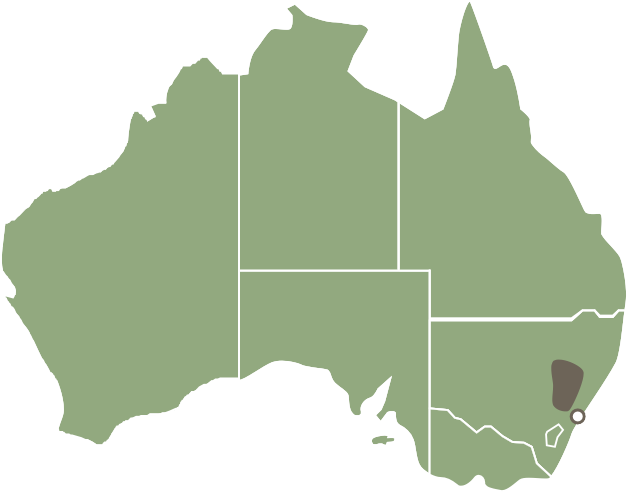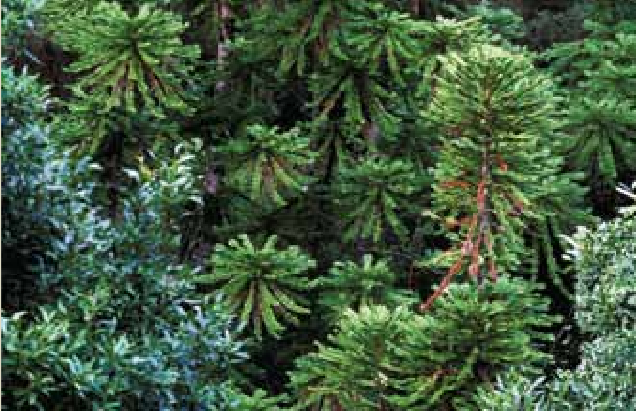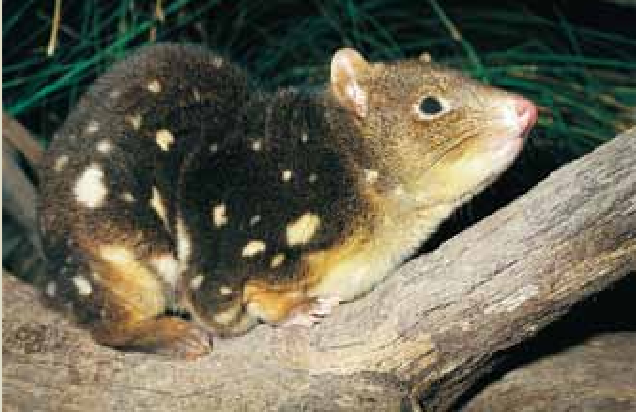Greater Blue Mountains
大蓝山

Ten times older than the Grand Canyon and with a human history dating back 22,000 years, the Greater Blue Mountains contain over 1,500 species of plants and animals across an exceptional range of habitats — shimmering mountains, cathedral caves, deep gorges and valleys of water cascading into remnant, pre-historic rainforests.
The Greater Blue Mountains comprise a World Heritage site, eight national parks and protected areas, four internationally significant wetlands and contain rich cultural traditions of six Aboriginal groups - the Darug, Darkinjung, Dharawal, Gundungurra, Wanaruah and Wirajuri.
BLUE MOUNTAINS LANDSCAPES
The Greater Blue Mountains takes its name from the blue shimmer which is said to rise into the air as the oil from the eucalyptus trees evaporates. Nowhere else on earth is there such a diverse range of eucalypt species, within such a small geographical space, specially adapted to survive across a landscape. This diversity played a major role in the declaration of the area as a World Heritage site. The region is one ofthe three most diverse areas on earth for scleromorphic (hard-leaved) plants. Over 1,000 different species of plants have been recorded in the Greater Blue Mountains area including 127 rare orthreatened species, and a further 114 species that are found nowhere else on earth.
Connecting to our ancient past
The majestic Wollemi pine, which can grow up to 40 metres high, is a reminder of our ancient past. The tree is a remnant from a 200 million year-old landscape, when Australia, New Zealand and Antarctica were still joined together as the supercontinent Gondwana.
Thought to have been extinct for millions ofyears, the Wollemi Pine was rediscovered by a bushwalker in 1994. Fewer than 100 trees exist in the wild, growing in the deep rainforest gorges ofthe Greater Blue Mountains.
The Blue Mountain Botanic Gardens, Mount Tomah — a World Heritage experience
The 28-hectare Blue Mountain Botanic Gardens at Mount Tomah contain a world-class display of cold-climate plants. A newly opened World Heritage exhibition centre provides the opportunity to understand remote inaccessible areas of the landscape and discover their world heritage values.
A VAST ANIMAL KINGDOM
Over 400 animal species can be found across the landscape, including Australian icons such asthe kangaroo, koala, platypus and echidna. Another 40 rare orthreatened species can also be found like the spotted-tail quoll.
SPOTTED-TAILED OUOLL
The spotted-tai led quoll is the largest native carnivore left on mainland Australia. It lives in forest, woodland and dense coastal heathland. The quo Il’s distribution has decreased markedly since European settlement and it is now uncommon. Considerably larger than other quolIs, the spotted-tai led quoll has unmistakable colouring — red- brown with bold white spots alongthe entire body and tail. It is largely nocturnal and eats small to medium-sized mammals and birds, such as possums and rosellas, and also large insects, spiders and scorpions. It forages in trees and on rock faces as well as on the ground. The quolI’s decline is mainly due to habitat loss and introduced predators such as foxes and cats.
Glow worms, which are the larval stage of a species of fly, emit phosphorescent light in the dark environment. The worms create the light through a series of chemical reactions. Suspended from cave roofs, glow worms spin silken threads like fishing lines to catch mosquitoes and other insects. Some theories suggest that colonies of glow worms create a false night sky, designed to confuse and lure in their prey.
You can see glow worms in an ecological niche created by anoldtraintunnelinthe Wollemi National Park. The worms are highly sensitive to disturbance so please don’t touch them, and make sure you shine your torch light on the floor of the tunnel or their glow will disappear.
大蓝山
大蓝山的历史比大峡谷悠久十倍,其人类历史可以追溯到22,000年前。在大蓝山有超过1,500种动植物,栖息地广阔,还有闪闪发光的山脉、天主教洞穴、深邃峡谷、瀑布飞流而下的山谷和史前雨林。 大蓝山包括一个世界遗产景点,八个国家公园和自然保护区,四个国际级湿地,还蕴含了六个原住民群体——答拉、答金君、答拉瓦、衮顿古拉、瓦纳拉和维拉度里的丰富文化传统。
大蓝山风光
大蓝山的名字来源于桉树油蒸发而起的蓝色微光。这片区域有着地球上最丰富的桉树群种;仅仅这么一小块地理区域内,桉树种类如此多样,已然适应了当地的环境,而这种多样性也是该地区被评为世界遗产地的主要原因。 该区域也是地球上硬叶植物最丰富的三大区域之一。据计蓝山区域有1000多种植物物种,其中包括127种稀有濒危物种,另有114种是本地特有物种。
连通古老时光
宏伟的瓦勒迈松,高可至40米,是远古时代的写照。
瓦勒迈松是两亿年地貌的遗迹,当时澳洲、新西兰和南极大陆还连成一片,形成超级大陆岗得瓦纳。 外界原本以为瓦勒迈松已灭绝数百万年,直到1994 年一个丛林步行者重新发现了这个古老的树种。野外的瓦勒迈松现存不到 100 棵,主要生长在大蓝山地区布满青苔的幽深峡谷中。 蓝山植物园,多玛山——体验世界级遗产所在地 占地28公顷的多玛山蓝山植物园拥有世界级的寒带植物。 新开设的世界遗产展览中心为游客提供了一个了解偏远地区景观植物,发现其世界遗产价值的机会。
巨大的动物王国
在整个景点区域有400多种动物,包括澳大利亚的象征袋鼠、考拉、鸭嘴兽和针鼹。另有40种稀有濒危物种,如斑尾袋鼬。
斑尾袋鼬
斑尾袋鼬是澳大利亚大陆最大的本土食肉动物,它生活在森林、林地和沿海荒地之中。自欧洲人登陆以来,斑尾袋鼬的分布明显减少,现在也较难见到。 斑尾袋鼬比其他种类的袋鼬大得多,毛色独特——红褐色的皮毛,整个身体和尾巴上都有醒目的白色斑点。 斑尾袋鼬主要是夜间活动,在树木、岩石和地面之间捕食中小型哺乳动物和鸟类,如负鼠和玫瑰鹦鹉,以及大型昆虫、蜘蛛和蝎子。斑尾袋鼬数量下降的主要原因是栖息地被破坏以及狐狸和猫等食肉动物的侵入。
萤火虫
萤火虫其实是一种蝇类的幼虫,其在黑暗的环境中会发出磷光。萤火虫通过一系列化学反应发光,它会悬挂在洞穴顶,纺出光滑的细丝,像钓鱼线一样捕捉蚊子和其他昆虫。一些理论认为,萤火虫的居住地可以制造出一种虚假夜空的感觉,旨在迷惑和引诱他们的猎物。



